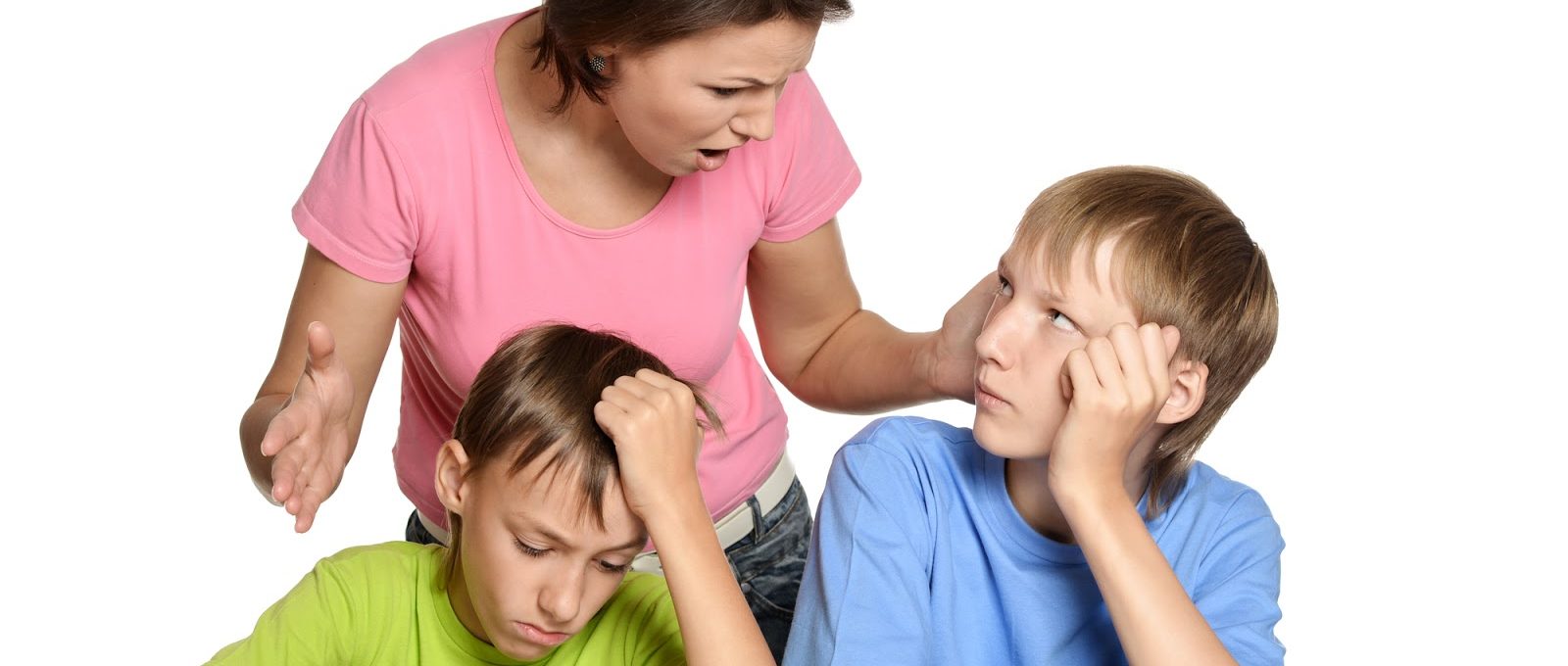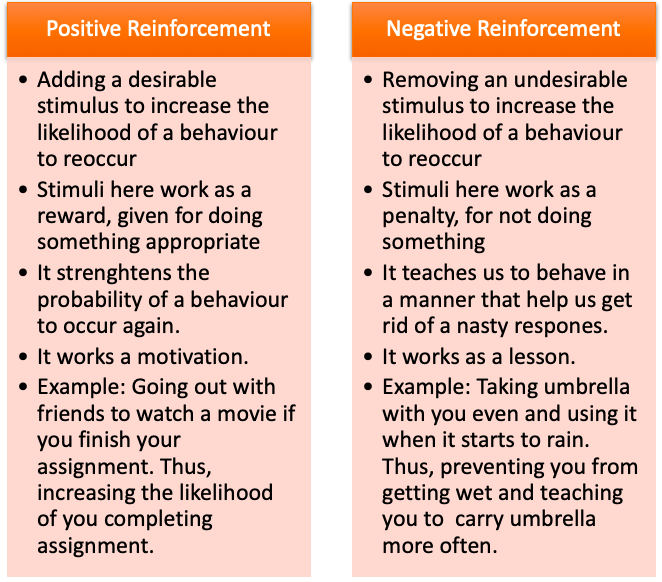Classroom management can be a very challenging part of teaching. Keeping 20-30 students calm, engaged, and motivated to learn is no easy feat! For optimal learning, it is necessary for the teacher to have the student’s behavior under control. It is also important for students to be given clear expectations so they know exactly what behaviors are expected in the classroom. Just as the principles of reinforcement and punishment can be utilized in the home, they can also be used to help with the management of behaviors at school.
With the behaviorist learning theory in the classroom, there are four basic types of reinforcement that can be used. Positive Reinforcement. This is an immediate reinforcement of a wanted behavior when it is observed. Giving a student verbal praise for a wanted behavior is a common form of positive reinforcement that teachers offer to students. Negative reinforcement: Negative reinforcement is a concept within operant conditioning and is a means of shaping behavior. Negative reinforcement refers to the removal of a negative stimulus in.
Using Reinforcement in the Classroom:

Reinforcement is a consequence following a behavior that increases the probability that the behavior will increase in the future.
In addition to keeping behavior under control, reinforcement in the classroom should be used to keep students engaged and motivated to learn. Teachers should use reinforcement often in order to maintain a positive learning environment and to promote appropriate classroom behaviors.
Examples of reinforcers that can be used in the classroom include the following:

- Teacher praise
- Earning privileges
- Teacher attention
- Taking away a homework assignment
- Extra recess time
- Extending a deadline
Examples Of Negative Reinforcement In The Classroom Pdf
Using Punishment in the Classroom:

Punishment is a consequence following a behavior that decreases the probability that a particular behavior will occur in the future.
Punishment should be used in the classroom to decrease undesirable behaviors. Punishment in the classroom needs to be implemented with care, and should never be used to single students out or to punish behaviors that are due to a specific disability. If a particular student has challenging behaviors as a result of a disability, it is important to seek additional assistance so a behavior plan tailored to that child can be developed.
Examples Of Positive And Negative Reinforcement
Generally, reinforcement should be the primary strategy utilized in the classroom, but if punishment is necessary, it should be the least restrictive type of punishment. Before implementing any punishment strategies, it is important to check with your school’s policy on appropriate classroom management strategies and what is and is not permitted in your specific school.
Examples of punishments that have been used in classroom include the following:
- Loss of recess time
- Extra homework
- Loss of other privileges
- Detention
Examples of more restrictive and inappropriate punishments include sending a student to a solitary time-out room and missing lunch or snack.
Many teachers use classroom-wide behavior management systems that utilize both reinforcement and punishment. These systems are very popular in many classrooms because they can be easy to implement and the students know exactly what is expected of them.
Classroom-wide behavior management systems that utilize both reinforcement and punishment:
- Stoplight Management System: A large stoplight with green, yellow, and red is placed in the classroom along with moveable buttons or clothespins with each student’s name. The students begin each day on green, but depending on their behavior can move to yellow or red. At the end of the day the students who are still on green receive some type of reward or privilege.
- Token Economy: A behavior change system where students earn tokens for engaging in specific behaviors and then at a specified time, can exchange those tokens for desired items.
- Group Contingencies: These types of contingencies occur when one consequence is delivered based on the behavior or performance of either certain students or all of the students in the classroom. There are three different types of group contingencies.
- Independent group contingency: A reward is available to all of the students in the classroom, but only students who meet the specific criteria earn the reward.
- Dependent group contingency: The reward for the entire group is dependent on the behaviors or performance of one specific student or small group.
- Interdependent group contingency: All of the students in the classroom are required to meet the specific criteria (both individually and as a group) before earning a reward.